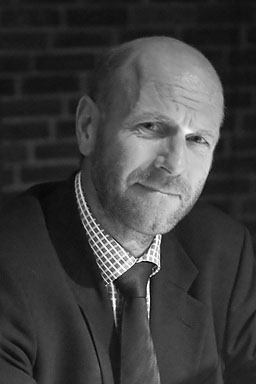Auf Einladung des Instituts für Mechanik und Flächentragwerke hält am kommenden Freitag, 25. März, um 14 Uhr Professor Ardeshir Guran vom Institute of Structronics, Ottawa, im Beyer-Bau 114 einen Vortrag mit dem Thema „Stability and Control of Nonconservative Systems“.
Schlagwort: Gastvorträge
Modelling in Geomechanics: Vortrag und Workshop
Am Dienstag, 07.12.2010, finden zwei Veranstaltungen mit Professor Tamagnini von der Università degli Studi di Perugia an der Professur für Bodenmechanik und Grundbau statt. Um 10 Uhr sind alle Studentinnen und Studenten sowie MitarbeiterInnen der Universität zu seinem Vortrag „Multiphysics modeling of electrokinetic phenomena in fine-grained soils“ in den Seminarraum 101 des Neuffer-Baus eingeladen (Kurzfassung des Vortrags als PDF).
Am Nachmittag folgt von 14 bis 17 Uhr ein Workshop zum Thema „Modelling in Geomechanics“. Neben Prof. Tamagnini aus Italien wird David Masín von der Karls-Universität in Prag zu Gast sein. Aktuelle Forschungsthemen an unserem Institut werden vorgestellt und im Anschluss diskutiert. Der Workshop wird in der Bibliothek im Anbau des Neuffer-Baus gehalten (Programm als PDF).
Advanced concrete materials

Tor-Arne Hammer
Im Rahmen der Vortragsreihe des SFB 528 spricht am 22. Oktober Dr. Tor-Arne Hammer von SINTEF, Norwegen, zum Thema „Advanced concrete materials for structural applications – Norwegian experience“. Der Vortrag findet im Potthoffbau, Hörsaal 161 statt und beginnt um 14:50 Uhr. Hier der Abstract des Autoren:
Concretes with high strength and/or low weight have been in focus for more than two decades, driven by the need for longer bridges, taller buildings and more slender structures. This has resulted in improved standards and codes allowing utilization of concrete with compressive strength of more than 100 MPa as well as densities down to 1200 kg/m3, for structural applications. However, the experience show that these concretes may have reduced execution properties, and together with relatively high material cost this has limited the use of these concretes. It can be interpreted from the ongoing ECO-serve thematic EU network, with main objective to identify the needs of the European Construction Industry, that future needs will be driven more by environmental issues. The term advanced concrete materials may be related to environmental issues.
Based on this fundament a Norwegian consortium prepared a proposal for a Centre for Research based Innovation (CRI), and was granted with governmental money (through the Research Council of Norway) as well as industrial support for 8 years, as one of presently 14 Centers, in competition with proposals from most other business sectors. In fact, concrete was the only materials proposal granted. The main objective for CRIs is to enhance the capability of the business sector to innovate by focusing on long-term research based on forging close alliances between research-intensive enterprises and prominent research groups.
The Centre is called COIN – Concrete Innovation Center. The vision is creation of more attractive concrete buildings and constructions. Attractiveness implies aesthetics, functionality, sustainability, energy efficiency, indoor climate, industrialized construction, improved work environment, and cost efficiency during the whole service life. The primary goal is to fulfill this vision by bringing the development a major leap forward by more fundamental understanding of the mechanisms in order to develop advanced materials, efficient construction techniques and new design concepts combined with more environmentally friendly material production.
Cohesive Models of Fracture and 3D Fragmentation Procedures
Prof. Dr. Anna Pandolfi, Dipartimento di Ingegneria Strutturale, Politecnico di Milano will be talking about „Cohesive Models of Fracture and 3D Fragmentation Procedures“ as part of a siries of lectures held within SFB 528 research. The lecture is on April 27th, 13.00 at BEY 67.
From the abstract:
Finite element simulations of high-velocity dynamical processes involving fracture and fragmentation represent some of the most challenging problems in computational mechanics. Difficulties especially arise when the nature of the problem requires a full three dimensional model.
In the framework of the finite deformations, a class of general 3-D cohesive finite element and a self-adaptive remeshing procedure have been developed specifically addressing multiple branch and mixed mode fracture processes.
Numerical simulations regarding the initiation and the propagation of complex fracture patterns and the formation of fragments in dynamical tests are presented and compared to experimental results. Applications to experimental tests in aluminum (expansion of rings under magnetic field), steel (three point bend tests on C300 high resistance steel), plane concrete (brazilian tests on cylinders, and Charpy test on plates), and graphite-epoxy composites demonstrate the versatility of the method, and attest its ability to reproduce the most significant features of the dynamical fracture.
